
I'm having trouble getting good photos--all I have is my phone camera--but I can definitely take more if anyone would like.
Here's what I know:
~Not a replica. It's well-preserved, but it's not stainless steel and the wood shows signs of having rotted once.
~The balance is off; it's heavier in the blade than the hilt, though someone told me that could be on purpose.
~Fully tanged, all the hilt is is two blocks of wood carved to fit the metal, then bolted on with brass (I think it's brass, not bronze... I haven't ever seen much of either, so I have trouble telling the difference).
~The sheath is also two blocks of wood carved to fit, held together with black leather and brass (again, I'm assuming it's brass) sheeting, plus that round cap on the point. The sheeting has simple designs on it. The top is marked with small chevrons, some of them making a rough cross, while the backside actually has small holes punched in it for the design.
~There's a thick strip of metal--this time, I'm assuming bronze--wrapped around the top of the hilt with a ring through it. You can see it in the top picture, but that's not where it originally was--it's loose now and slides up and down that bit of sheeting, but it actually fits that darker stripe, there's a slight groove there.
~The inscription is too messy to have been done either by a machine or a particularly skilled professional--there are marks all over the place where his hand must have slipped. It's in some Arabic language, but I'm not sure what. Inside the crescent moon are four digits in a numeral system I don't know the name of; the numbers read 0016 or 6100, which do not correspond with a sensible calendar date.
~The blackened, almost tear drop shaped mark at one end of the inscription is a deep gouge. I'm wondering if there was something there originally (I don't know enough about swords, so my guesses range from a gem to a sigil or crest) that was pried out when the sword found a new owner.
~The grooves on the blade stop just short of the inscription on the one side, but cut all the way to the hilt on the other side--I'm guessing that the maker intended all along to have something in that spot.
~It has an edge, but that edge is far sharper on the sides and closer to the hilt than at the point. In fact, the edges near the point are barely sharp at all, and the point itself is downright rounded. The point is also slightly bent upward (up being the side with the inscription) like maybe someone smacked it hard against something (a tree stump? something metal?). This bend at the tip is not bad enough to interfere with pulling it in or out of the sheath.
~It's right about 2 feet from point to where the hilt starts.
~~~~~
I know next to nothing about swords, though this isn't the first time I've held a weapon older than I am... I'm still working on getting a translation of the inscription (or heck, just a clearer photo so I can pass it around the internet), but I'd love to know anything people can tell me about the sword itself, or it's possible history.